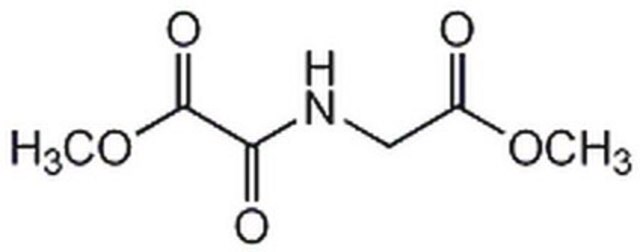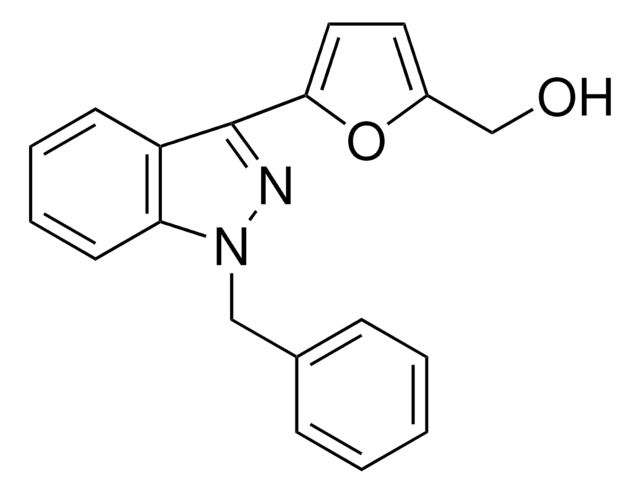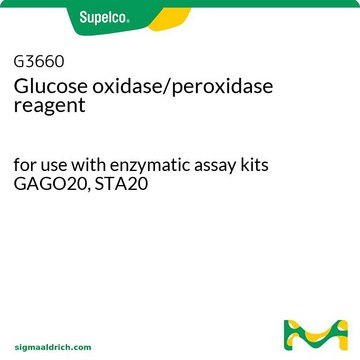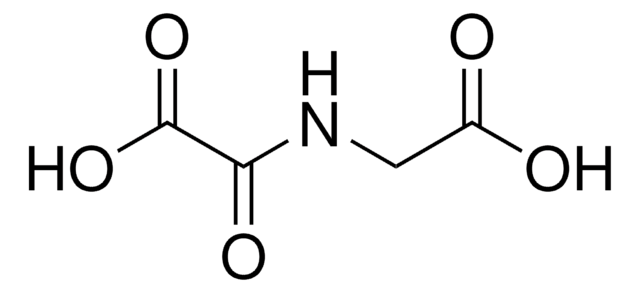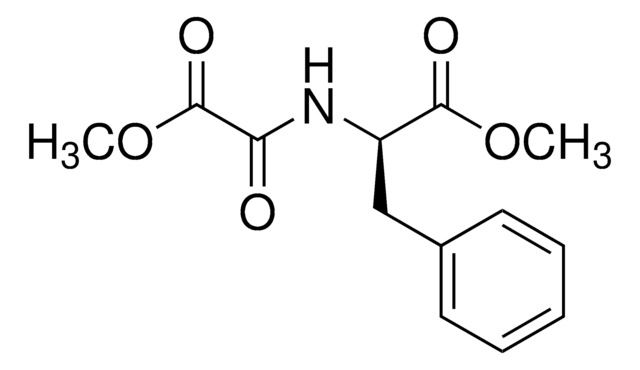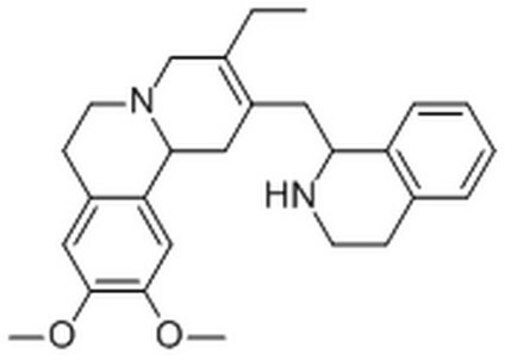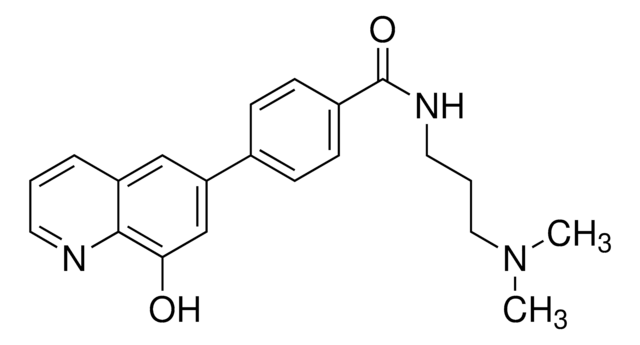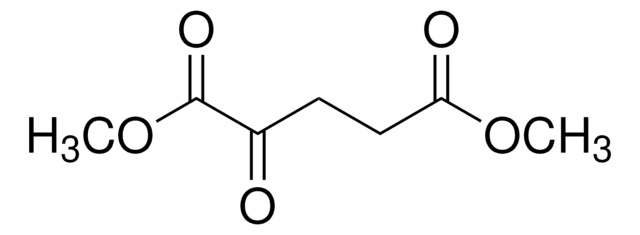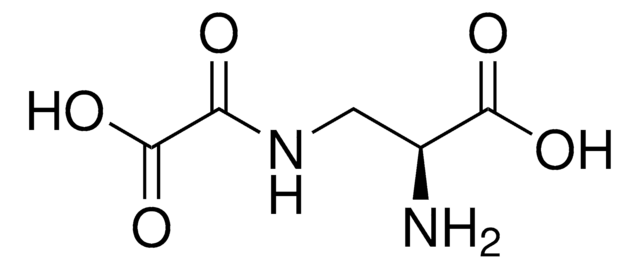D3695
DMOG
≥98% (HPLC), powder, HIF-hydroxylase inhibitor
Sinónimos:
Dimethyloxalylglycine, N-(Methoxyoxoacetyl)-glycine methyl ester
About This Item
Productos recomendados
Nombre del producto
DMOG, ≥98% (HPLC)
Nivel de calidad
Ensayo
≥98% (HPLC)
Formulario
powder
color
white to off-white
solubilidad
H2O: >30 mg/mL
Condiciones de envío
wet ice
temp. de almacenamiento
−20°C
cadena SMILES
COC(=O)CNC(=O)C(=O)OC
InChI
1S/C6H9NO5/c1-11-4(8)3-7-5(9)6(10)12-2/h3H2,1-2H3,(H,7,9)
Clave InChI
BNJOZDZCRHCODO-UHFFFAOYSA-N
Aplicación
- in hypoxia-inducible factor (HIF) activity assay
- to examine its effects on the degradation of HIF-1α and renal regeneration
- in DMOG preconditioning of adipose tissues
- as vehicle control for the primary liquid culture of CD34+ cells
- for endothelial cell stimulation
Acciones bioquímicas o fisiológicas
Características y beneficios
Palabra de señalización
Warning
Frases de peligro
Consejos de prudencia
Clasificaciones de peligro
Acute Tox. 4 Oral
Código de clase de almacenamiento
11 - Combustible Solids
Clase de riesgo para el agua (WGK)
WGK 3
Punto de inflamabilidad (°F)
Not applicable
Punto de inflamabilidad (°C)
Not applicable
Elija entre una de las versiones más recientes:
¿Ya tiene este producto?
Encuentre la documentación para los productos que ha comprado recientemente en la Biblioteca de documentos.
Los clientes también vieron
Artículos
We present an article about how proliferating cells require the biosynthesis of structural components for biomass production and for genomic replication.
Nuestro equipo de científicos tiene experiencia en todas las áreas de investigación: Ciencias de la vida, Ciencia de los materiales, Síntesis química, Cromatografía, Analítica y muchas otras.
Póngase en contacto con el Servicio técnico